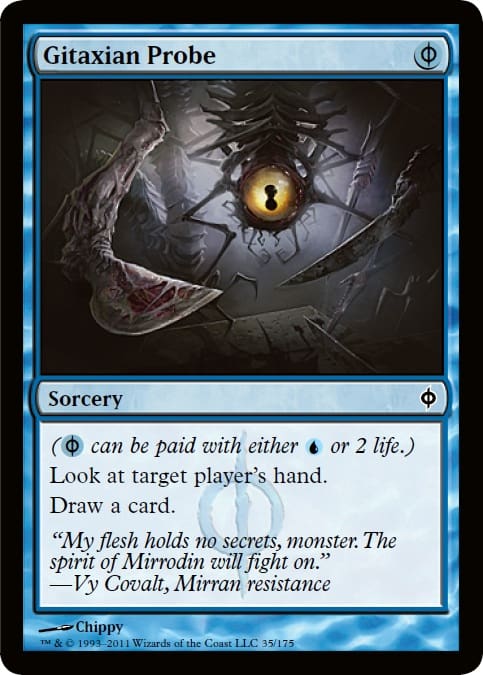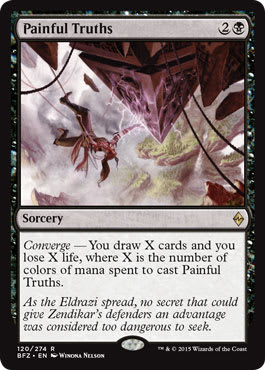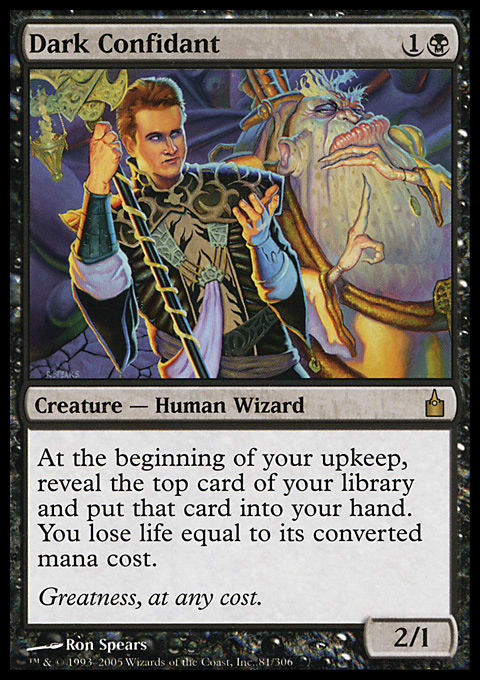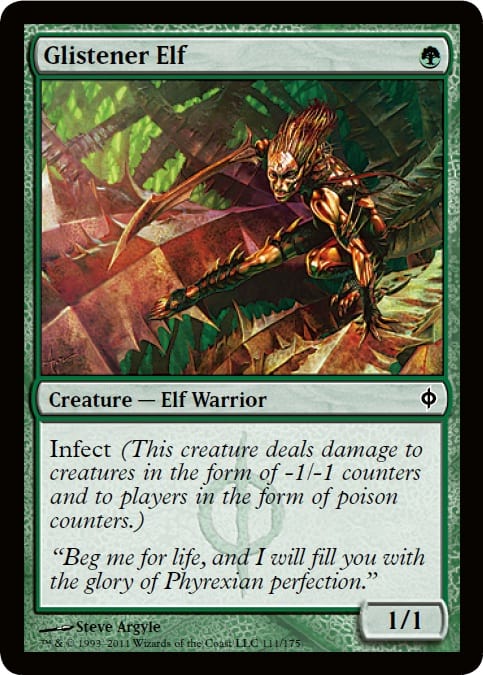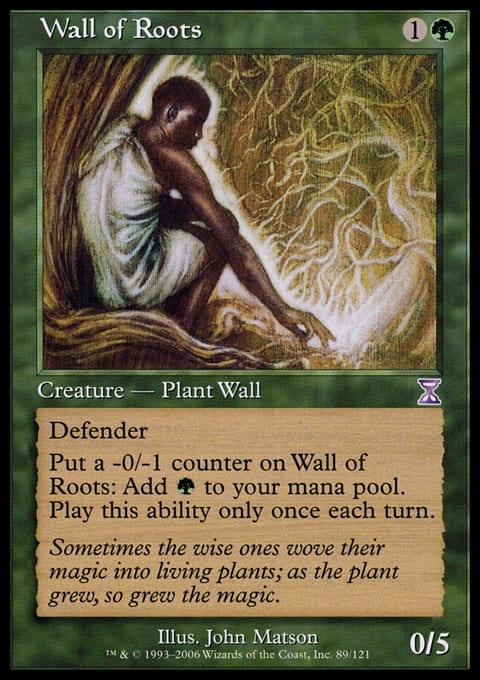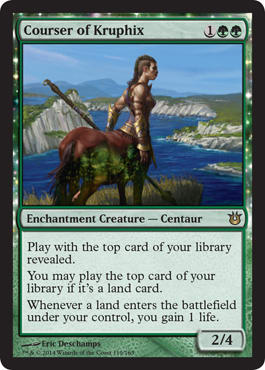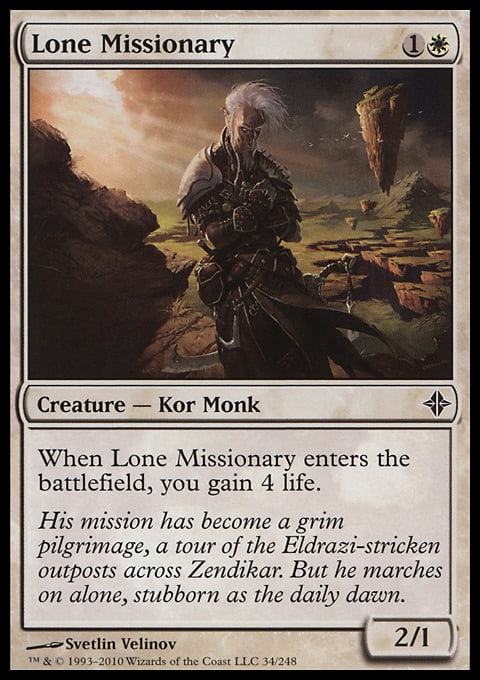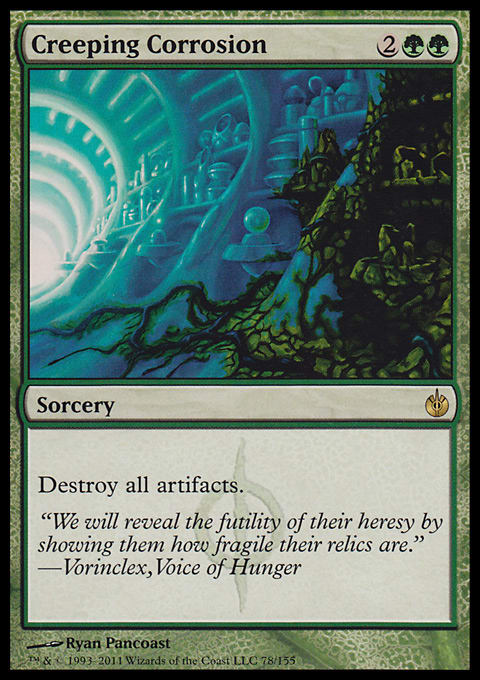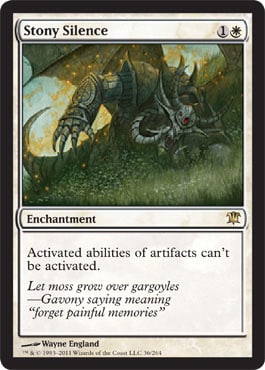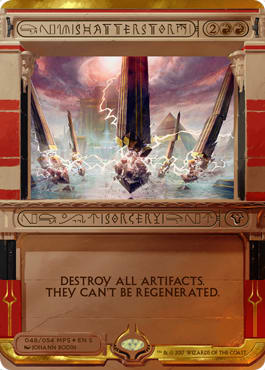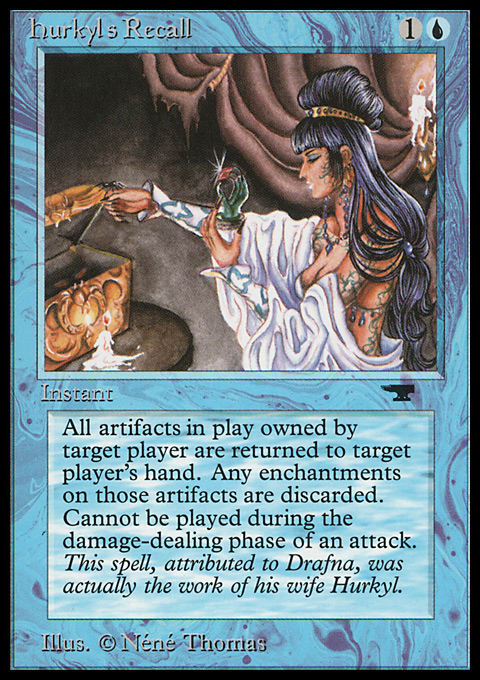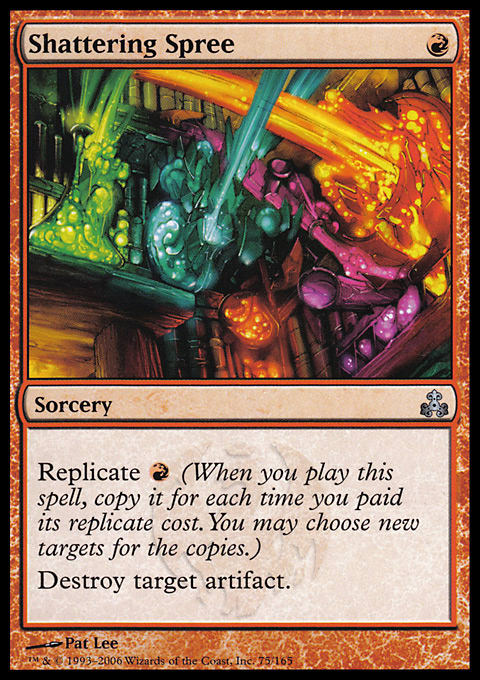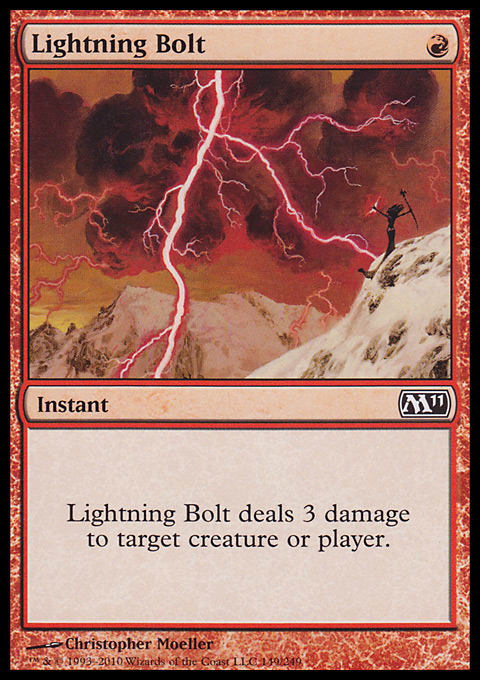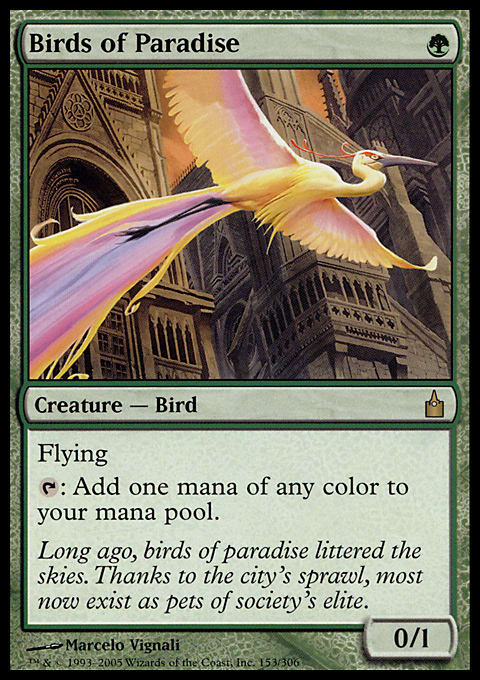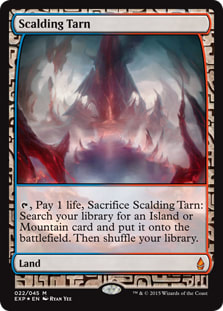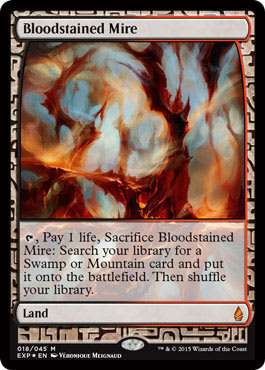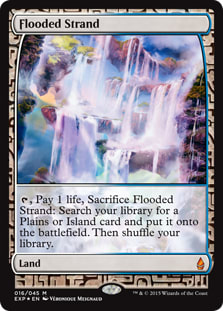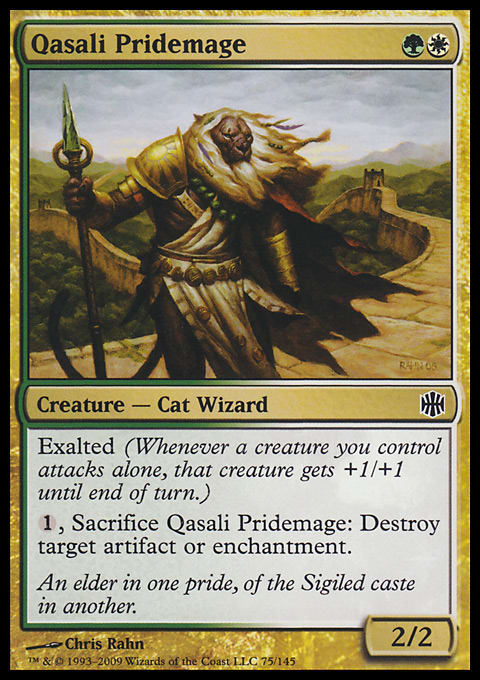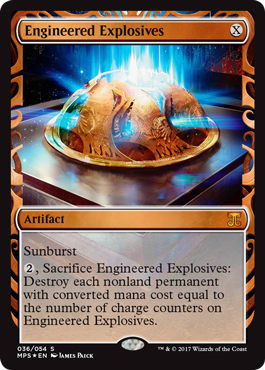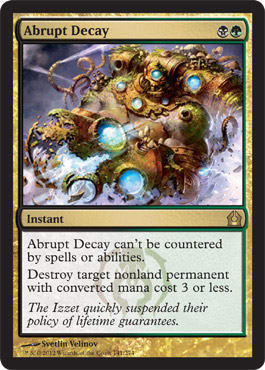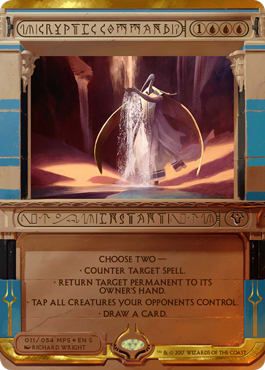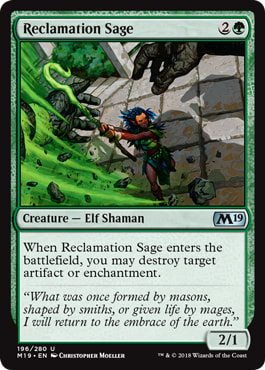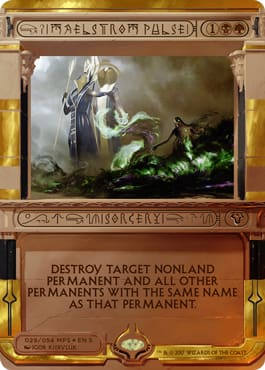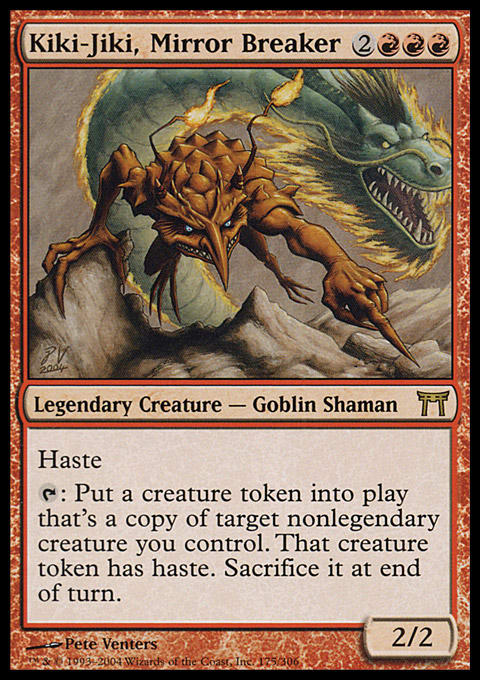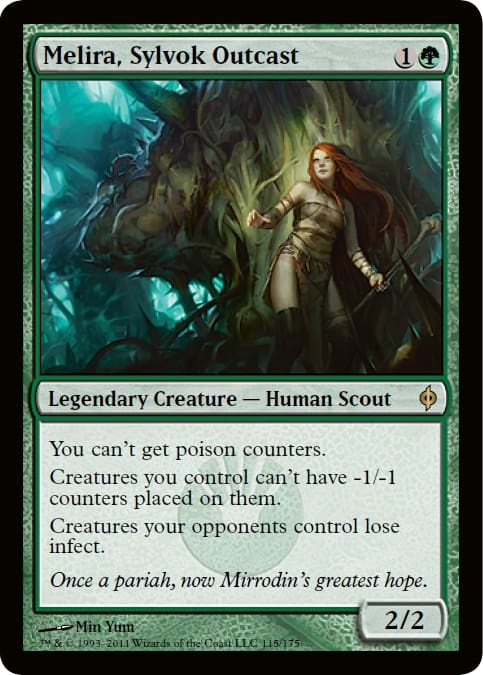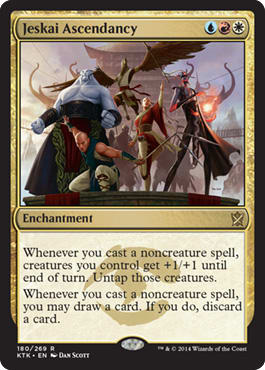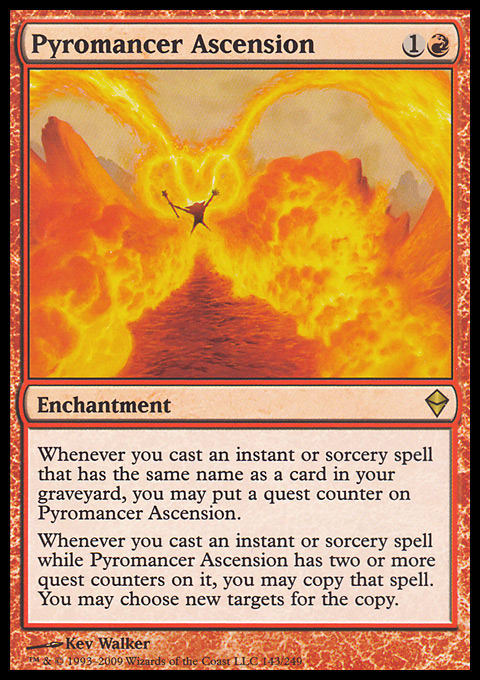It’s alive! Eldrazi Winter is finally over, and Modern is back on its feet again! Modern had taken a pretty big hit in diversity and attendance due to the Eldrazi menace rearing its ugly head, and now that it is gone, people are starting to become interested in the format again.
Like any successful game, Magic is always growing and changing to try to accommodate new players, and there are many people who want to sink their teeth into Modern for the first time. Modern can be incredibly daunting for newer players who haven’t tried their hands at eternal formats before. With just under ten thousand legal cards (9,981 to be exact) and almost fifteen years of history in the cards, there is a lot to learn.
It’s nearly impossible to list everything anyone could need to learn in a single article or in writing at all, but I’m going to have a go at listing a handful of common rules or adages for the format to help players get a jumpstart in their games. In the interest of being as information-dense as possible, let’s jump right in!
Don’t Be Afraid to Hurt Yourself
Modern is a format that is warped around efficient spells and mana. Piles and piles of cards all involve paying life in order to try to squeeze as much value out of cards as possible.
There is a caveat for everything, but it is important to go into the format understanding that a lot of your cards are going to sting a little bit when you use them.
Have a Plan for Burn
This somewhat contradicts my previous point, but bear with me. Many players in Modern, new and old, enjoy throwing damage at the opponent’s face 3 points at a time. A significant number of decks cannot reasonably race the clock that Burn can represent or prevent enough of the damage the deck will deal.
Burn ? Modern | Emma Handy
- Creatures (18)
- 2 Grim Lavamancer
- 4 Eidolon of the Great Revel
- 4 Goblin Guide
- 4 Monastery Swiftspear
- 4 Wild Nacatl
- Spells (22)
- 2 Searing Blaze
- 4 Atarka's Command
- 4 Boros Charm
- 4 Lightning Bolt
- 4 Lava Spike
- 4 Rift Bolt
- Lands (20)
- 3 Mountain
- 2 Sacred Foundry
- 2 Stomping Ground
- 3 Bloodstained Mire
- 3 Scalding Tarn
- 3 Wooded Foothills
- 4 Arid Mesa
- Sideboard (15)
- 2 Searing Blaze
- 4 Destructive Revelry
- 3 Skullcrack
- 2 Gaddock Teeg
- 2 Path to Exile
- 2 Deflecting Palm
One way to combat the Burn decks is to race them. There are many decks that can do this through poison counters (out of the Infect deck), through being a faster combo deck (anything that cheats a big creature into play), or through being a turn faster on a fair axis (like Affinity is wont to do).
The other key way to defeating Burn is to have so much life-gain that the Burn player cannot reasonably reduce your life total to 0. This is common for green, creature-based decks, as the archetype can gum up the ground with blockers and then start playing creatures with incidental life-gain abilities attached to them.
If you are building a new deck for Modern and it cannot beat a Monastery Swiftspear or Goblin Guide on the first turn, it’s probably time to go back to the drawing board.
Have a Plan to Beat Affinity
Affinity is a kind of litmus test for the Modern format. For those who don’t know, here is a pretty average Affinity deck for Modern:
Affinity ? Modern | Emma Handy
- Creatures (28)
- 4 Arcbound Ravager
- 4 Master of Etherium
- 4 Memnite
- 4 Ornithopter
- 4 Signal Pest
- 4 Steel Overseer
- 4 Vault Skirge
- Spells (16)
- 3 Thoughtcast
- 1 Welding Jar
- 4 Cranial Plating
- 4 Springleaf Drum
- 4 Mox Opal
- Lands (16)
- 1 Island
- 3 Glimmervoid
- 4 Blinkmoth Nexus
- 4 Inkmoth Nexus
- 4 Darksteel Citadel
- Sideboard (15)
- 2 Wear // Tear
- 1 Surgical Extraction
- 2 Ghirapur Aether Grid
- 1 Dismember
- 1 Dispatch
- 3 Etched Champion
- 2 Spell Pierce
- 2 Thoughtseize
- 1 Grafdigger's Cage
Affinity’s primary game plan is to swarm the field with a pile of mediocre creatures (with its 0- and 1-mana-cost spells) and end the game quickly during combat. Between Cranial Plating, Master of Etherium, and Arcbound Ravager, the goal is to do it with the evasion that most of the creatures have or with the deck’s inherent ability to “go wide” by playing so many little creatures that the opponent will have a hard time blocking all of them.
Affinity has survived many ban lists based on how powerful the hate cards for Affinity are. Having a plan may be as simple as having a very poor matchup during the first game and bringing in any of these for the second and third games:
Make sure to pay attention to Affinity’s creature lands in Inkmoth Nexus and Blinkmoth Nexus. Having exclusively sorcery-speed ways to deal with creatures is a mistake that many people pay dearly for when squaring off against the mechanical armada.
Always Bolt the Bird
This is a saying that transcends the Modern format and may very well be the oldest Magic “rule” that I know. Playing Lightning Bolt isn’t required to follow this advice either. The theory is that if a player has the ability to kill a mana dork (on the first turn) without too high a cost, that player absolutely should.
Melira Company ? Modern | Emma Handy
- Creatures (28)
- 1 Archangel of Thune
- 1 Fiend Hunter
- 1 Murderous Redcap
- 1 Orzhov Pontiff
- 1 Qasali Pridemage
- 1 Scavenging Ooze
- 1 Spike Feeder
- 2 Eternal Witness
- 2 Wall of Roots
- 3 Kitchen Finks
- 3 Noble Hierarch
- 3 Viscera Seer
- 4 Birds of Paradise
- 2 Anafenza, Kin-Tree Spirit
- 2 Melira, Sylvok Outcast
- Spells (8)
- 4 Chord of Calling
- 4 Collected Company
- Lands (22)
- 1 Plains
- 1 Swamp
- 2 Forest
- 1 Godless Shrine
- 1 Razorverge Thicket
- 2 Gavony Township
- 2 Horizon Canopy
- 2 Overgrown Tomb
- 2 Temple Garden
- 4 Verdant Catacombs
- 4 Windswept Heath
- Sideboard (15)
- 1 Kataki, War's Wage
- 2 Sin Collector
- 2 Thoughtseize
- 2 Abrupt Decay
- 1 Fulminator Mage
- 1 Phyrexian Revoker
- 3 Path to Exile
- 1 Scavenging Ooze
- 2 Voice of Resurgence
Letting the opponent pull very far ahead on mana for the sake of sandbagging a removal spell is often the wrong play. Remember that Sinkhole is a card that has been “too powerful” for years, and killing an early mana dork is very similar to using the removal spell as a form of land destruction.
Choosing a Flavor of Graveyard Hate Is Important
There are all kinds of cards that interact with the graveyard in some way or another, and when choosing which hate cards to play in the sideboard, it’s crucial to understand what you are trying to answer with that card.
Rest in Peace may be the most powerful way to inform your opponent, “No, I insist, there seriously aren’t graveyards this game,” but it can backfire in a big way if you have any creatures with effects that trigger when they die.
If the deck you are worried about is a Goryo's Vengeance–fueled Reanimator deck or something involving Kitchen Finks, Grafdigger's Cage may be the spell for you. Relic of Progenitus is better if your deck has issues with colored mana or needs the ability to control when graveyards are being hated. Surgical Extraction is a fantastic option in conjunction with Snapcaster Mage, as it doesn’t hurt its controller’s graveyard. Each of these cards accomplishes similar goals, but through very different means.
Fetching Is Difficult
There could be entire segments written on fetching in conjunction with different cards or saving fetch lands, but there are a handful of rules that will work out ninety percent of the time.
Unless you are planning to cast a spell, it is better to wait to fetch, as to withhold information from your opponent. If you don’t have a spell to cast, you don’t have to show your opponent you don’t have anything by fetching a land tapped.
If you aren’t casting a spell and don’t need to bluff, the best time to fetch is at the opponent’s end step. At the end of that player’s turn, you can fetch for a shock land and put it onto the battlefield tapped in order to save yourself a bit of life.
Try to use the fetch lands that fetch fewer lands first. This makes it less likely you will end up with fetch lands without lands to grab.
Grabbing shock lands early is fine, but try to conserve your life total by fetching basic lands when possible. This isn’t always true if the opponent is playing Ghost Quarter, but saving life against a burn or aggressive deck, or playing around Blood Moon a little bit, is fantastic. This segues perfectly into the next point.
Blood Moon Effects Are Real
Play around these cards.
Remember these cards.
Warp your game around these cards.
If your opponent is searching for a significant number of basics with fetch lands and that player is playing red, it is very likely the player is playing Blood Moon. If your deck doesn’t contain a significant number of red spells, having everything turned into Mountains is a pretty significant issue and can be avoided under a number of circumstances. There are control decks that tend to prey on decks with greedy mana. The Blue Moon control archetype, for example, tries to gain virtual card advantage by making several of the opponent’s cards unplayable.
Blue Moon ? Modern | Emma Handy
- Creatures (7)
- 1 Izzet Staticaster
- 4 Snapcaster Mage
- 2 Pia and Kiran Nalaar
- Planeswalkers (1)
- 1 Chandra, Flamecaller
- Spells (29)
- 1 Dismember
- 2 Cryptic Command
- 2 Electrolyze
- 3 Mana Leak
- 3 Remand
- 4 Lightning Bolt
- 2 Roast
- 3 Ancestral Vision
- 4 Serum Visions
- 4 Blood Moon
- 1 Batterskull
- Lands (23)
- 2 Mountain
- 8 Island
- 1 Desolate Lighthouse
- 1 Flooded Strand
- 1 Misty Rainforest
- 2 Polluted Delta
- 2 Steam Vents
- 2 Sulfur Falls
- 4 Scalding Tarn
- Sideboard (15)
- 1 Magus of the Moon
- 2 Batterskull
- 1 Jace, Architect of Thought
- 1 Keranos, God of Storms
- 1 Izzet Staticaster
- 2 Anger of the Gods
- 2 Sudden Shock
- 1 Spellskite
- 1 Negate
- 1 Molten Rain
- 1 Vandalblast
- 1 Shattering Spree
Playing around these cards can be achieved through a couple of different routes. The easiest for most decks is to fetch in a way that minimizes the damage that the Moon will do. Try to sequence your lands in a way that you may not be firing on all cylinders but such that casting your spells isn’t an enormous concern. The other way to play around Blood Moon is to play enchantment removal and hold a way to answer it as soon as the opponent plays it.
Read as many decklists and articles as possible.
You will never play every single deck that you prepared for or tested against—heck, you probably won’t play half of them. Modern is a wide-open format with something around fifty or sixty decks (that I can rattle off) that are commonly played. One of the most helpful things in Modern is understanding what the opponent is doing and what your deck can do to combat that strategy.
In this same vein, remember that nothing replaces actual games played, and experience can be a sort of skeleton key in this format.
Modern Combo Cheat Sheet
Instead of making a bunch of different subsections for different combos, I have lumped all of them together in order to try to list as many as possible in as few words as possible:
Kiki-Jiki, Mirror Breaker and Restoration Angel — Kiki-Jiki makes a copy of Restoration Angel, the new Restoration Angel Flickers Kiki-Jiki, who makes another copy of Restoration Angel, and so on, until there are enough 3/4 flying creatures to kill the opponent.
Scapeshift and Lands — Scapeshift generally searches for six Mountains and a copy of Valakut, the Molten Pinnacle in order to deal 18 points of damage to the opponent and kill that player. This tends to be enough due to the prevalence of shock lands, fetches, Thoughtseize, and so on. Scapeshift can do it for eight lands and just find a second copy of Valakut in order to deal 36 to the opponent instead.
Viscera Seer, Kitchen Finks, and Melira, Sylvok Outcast — There are some variations of this combo, but the formula remains similar: a sacrifice outlet, a persist creature, and either Melira, Sylvok Outcast or Anafenza, Kin-Tree Spirit. Melira prevents the persist creature from having a -1/-1 counter when it returns, and Anafenza’s bolster trigger adds a +1/+1 counter to the creature, canceling the -1/-1 counter on it. This allows the controller of the combo to gain infinite enters-the-battlefield triggers from either Murderous Redcap or Kitchen Finks.
Archangel of Thune and Spike Feeder — This produces infinite life and infinite +1/+1 counters on everything except Spike Feeder. Remove a counter from Spike Feeder to gain 2 life, and the Archangel triggers, replacing the +1/+1 counter and gaining 2 life.
Griselbrand and Nourishing Shoal — The combo deck uses either Goryo's Vengeance or Through the Breach to cheat Griselbrand into play and draw a pile of cards with his activated ability. After drawing a bunch of cards, the deck can gain life for free by exiling Worldspine Wurm to pay Nourishing Shoal’s alternative casting cost, thus continuing the card-drawing chain. Eventually, the deck uses a bunch of Simian Spirit Guides, Desperate Ritual-esque effects, and a Through the Breach to cheat Borborygmos Enraged onto the battlefield and discards a bunch of extra lands that were drawn to kill the opponent.
Thopter Foundry and Sword of the Meek — Pay ![]() , sacrifice Sword of the Meek, make a Thopter, and gain a life. The 1/1 Thopter triggers the Sword in the graveyard and returns it to play. It basically gives the controller the ability, “
, sacrifice Sword of the Meek, make a Thopter, and gain a life. The 1/1 Thopter triggers the Sword in the graveyard and returns it to play. It basically gives the controller the ability, “![]() : Gain X life and put X 1/1 blue artifact Thopter tokens with flying onto the battlefield.”
: Gain X life and put X 1/1 blue artifact Thopter tokens with flying onto the battlefield.”
Cascade spell with Living End — The Living End deck plays a bunch of creatures with cycling (Deadshot Minotaurs, Street Wraith, etc.) in order to find Demonic Dread or Violent Outburst. After casting one of the two cascade spells, the deck always hits Living End (as there aren’t any other spells that cost less than 3) and is able to cast the suspend spell very quickly.
Jeskai Ascendancy and a mana dork — The Jeskai Ascendancy combo deck uses a handful of creatures that produce mana (or creature lands) to cast draw spells virtually for free. For example, tapping a Birds of Paradise for a blue mana and then casting a Serum Visions ends up costing the controller of the spell 0 mana, as long as the player has an Ascendancy on the battlefield. The deck tries to use Birds of Paradise, Fatestitcher, or Faerie Conclave in order to cast a bunch of spells in one turn and eventually attack with enormous, mana-generating creatures.
Storm — This deck plays a bunch of spells in the same turn through Desperate Ritual, Pyretic Ritual, Manamorphose, Past in Flames, Pyromancer Ascension, and other, similar effects until it hits a high enough storm count to win with Grapeshot or Empty the Warrens.
Nivmagus Elemental — The Nivmagus deck also tends to play Death's Shadow, Kiln Fiend, and/or Thing in the Ice, and it hopes to make a single creature able to kill the opponent in one turn. The deck pays a significant amount of life for Phyrexian-mana spells (Gitaxian Probe, Mutagenic Growth, Gut Shot, Dismember, etc.) and exiles the “free” spells with Nivmagus Elemental to make an enormous 1-mana creature. The deck commonly wins with either Assault Strobe, Tainted Strike, Temur Battle Rage, or some combination of the aforementioned cards. Be very wary of letting these players untap with a creature on the battlefield.
This just scratches the surface of different decks and tricks to keep in mind when playing Modern. It’s a great time to enter the format, and with several Modern Star City Games Circuit events and Grand Prix coming up, what’s stopping you?
















